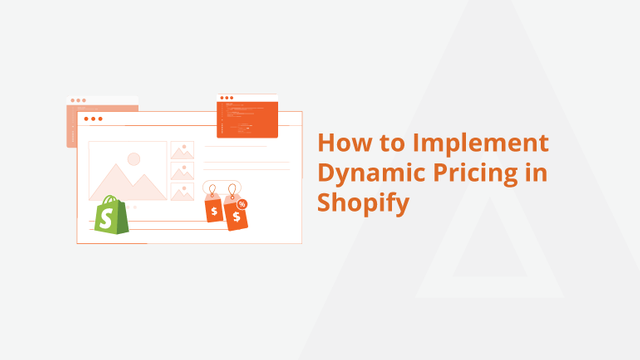
Introduction:
Dynamic pricing is a powerful strategy that allows businesses to adjust product prices based on various factors, optimizing for factors like demand, inventory levels, and customer behavior. While Shopify doesn't have a built-in dynamic pricing feature, you can implement it using third-party apps or custom code. In this guide, we'll explore both approaches to help you choose the method that best suits your business needs.
Part 1: Using Third-Party Apps
Step 1: Research and Choose an App Start by exploring the Shopify App Store for dynamic pricing apps. Popular choices include Bold Discounts, Prisync, and Repricer. Look for features that align with your pricing strategy.
Step 2: Install and Configure the App
Once you've chosen an app, install it from the Shopify App Store. Follow the app's setup instructions to configure dynamic pricing rules. Ensure you understand how the app integrates with your store and the flexibility it offers.
Step 3: Set Pricing Rules
Define pricing rules based on your strategy. This could include quantity-based discounts, time-limited promotions, or personalized discounts for specific customer segments. Specify conditions that trigger price changes to ensure relevance.
Step 4: Test the Dynamic Pricing
Before making changes live, run test scenarios to ensure the app adjusts prices correctly. Create test orders to verify that the pricing rules are applied accurately and do not conflict with other aspects of your store.
Step 5: Monitor and Optimize
Regularly monitor the app's performance and adjust rules based on results. Optimize pricing strategies to maximize sales and profitability. Keep an eye on customer feedback and adapt your dynamic pricing strategy accordingly.
Part 2: Custom Code Approach
Step 1: Backup Your Store
Before making any changes, create a backup of your Shopify store. This ensures you can revert to a stable version in case of unexpected issues.
Step 2: Access Theme Files
Navigate to Online Store > Themes in your Shopify admin. Click on "Actions" and choose "Edit code" to access your theme files.
Step 3: Edit Product Templates
Locate the product template file where you want to implement dynamic pricing (e.g., product.liquid). Edit the code to integrate custom logic for fetching and applying dynamic pricing.
Step 4: Add Custom Code
Integrate custom code, incorporating elements of Liquid, JavaScript, or other relevant languages. Ensure the code aligns with your dynamic pricing strategy and doesn't compromise the overall functionality of your store.
Step 5: Testing
Thoroughly test the dynamic pricing feature before deploying it live. Check different scenarios to ensure pricing adjustments work as intended, and there are no adverse effects on the user experience.
Step 6: Monitoring and Adjustments
Regularly monitor the dynamic pricing feature for any issues. Make adjustments to the code as needed based on performance, user feedback, and changes in your business strategy.
Considerations:
Legal and Ethical Considerations: Ensure your dynamic pricing strategies comply with legal and ethical standards to maintain trust with your customers.
Communication: Clearly communicate any dynamic pricing changes to your customers, promoting transparency and trust.
Data Security: If using third-party apps, ensure they adhere to Shopify's security standards to protect customer data.
Conclusion:
Implementing dynamic pricing in your Shopify store can enhance your sales strategy and improve customer satisfaction. Whether you opt for a third-party app or custom code, careful planning, testing, and monitoring are crucial for successful implementation. Choose the approach that aligns with your business goals and technical capabilities, and continuously refine your dynamic pricing strategy to stay competitive in the ever-evolving e-commerce landscape.
for detail blog :https://meetanshi.com/blog/dynamic-pricing-in-shopify/